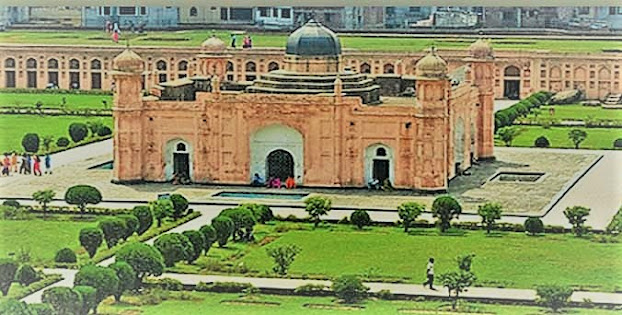History of Lalbagh Fort:
At first the name of this fort was Kella Aurangabad. And this fort was designed by Shah Azam. Azam Shah, the 3rd son of the Mughal Emperor Aurangzeb, started the construction of the fort in 16 AD as the residence of the subedar of Dhaka. Only a year later, before the construction of the fort was completed, Emperor Aurangzeb summoned him to Delhi to quell the Maratha rebellion. At this time the construction of the fort stopped after the construction of a mosque and a court hall. Nawab Shaista Khan came to Dhaka in 180 and resumed the construction of the fort. The fort was considered a disaster after the death of Pari Bibi, daughter of Tabeshaista Khan, and Shaista Khan stopped its construction in 164 AD. Prince Azam Shah's marriage with this fairy Bibi was arranged. The fairy Bibi is buried in the middle of the Durbar Hall and the mosque. Shaista Khan used to sit in the court hall and conduct the affairs of state. When Shaista Khan retired to Agra in 18, he handed over the ownership of the fort to his heirs.
After the departure of Shaista Khan from Dhaka, the importance of Lalbagh fort began to decline due to various reasons. In 1844, a semi-government organization called Dhaka Committee started the development work of the fort. At this time the fort came to be known as Lalbagh fort.
In 1910, the wall of Lalbagh fort was brought under the Archaeological Department as a preserved architecture. Finally, after 300 years of construction, Lalbagh Fort was renovated as much as possible in the eighties of the last century and was restored to its former appearance. Among the installations here, the tomb of Paribibi is quite significant. It is an excellent example of the Mughal period. Lalbagh fort is located with a wide area.






0 Comments